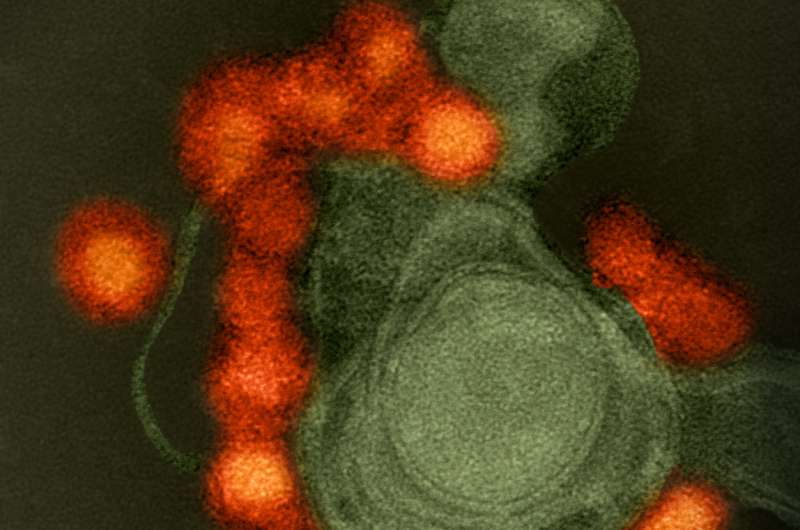Postnatal identification of Zika virus peptides from saliva

For the first time, researchers are using proteomics to examine proteins and peptides in saliva in order to accurately detect exposure to Zika virus. With 70 countries and territories reporting evidence of mosquito-borne Zika virus transmission, there is an increased need for a rapid and effective test for the virus. This study, published online today in the Journal of Dental Research (JDR), offers a new, quicker and more cost-effect way to test for the virus.
By analyzing the saliva of a pregnant mother infected with Zika and her twins—one born with microcephaly and one without—the researchers were able to pinpoint the specific protein signature for Zika that is present in saliva, creating potential to use this signature as an effective way to screen for exposure. Walter Siqueira, Schulich School of Medicine & Dentistry, Western University, Canada, and a team of international researchers also discovered important clues about how the virus passes from mother to baby and its role in the development of microcephaly, a birth defect in which a baby's head and brain is smaller than expected.
The research suggests a vertical transmission of the virus between mother and baby. The mutations in the amino acid sequence of the peptides that were different for each twin, suggesting that these mutations may play a role in whether or not a baby will develop microcephaly.
"We are very excited to publish findings that shed light on the transmission of Zika virus and present an innovative approach to assessing the presence of Zika virus," said JDR Editor-in-Chief William Giannobile. "This research has the potential to positively impact global health. By detecting the virus, the infected individuals can have their symptoms and the virus progression properly monitored, as well as take action to stop the spread of the virus which causes these devastating craniofacial defects in newborns."
Currently, the Centre for Disease Control and Prevention uses blood tests to look for changes to RNA in order to diagnose Zika. The drawback to this method is that it is only able to detect the virus up to five to seven days after exposure. Siqueira points out that because the proteins and the peptides that come directly from the virus are more stable than RNA, saliva proteomics can detect the virus far longer after exposure than with the traditional method. In this case, the window of detection was extended to nine months post-infection.
The findings also open new doors for the development of antibody-based diagnostic tests for point-of-care detection. The researchers have received a provisional U.S. patent to develop a simple device that can be used to identify the Zika virus peptides in saliva outside of the laboratory.
This study is accompanied with a perspective article "Could the Use of Saliva Improve the Zika Diagnosis Challenge? Contributions from a Proteomics Perspective" by IADR Regional Board Member Jaime Eduardo Castellanos, Universidad Nacional de Colombia, Bogotá.
More information: D. Zuanazzi et al, Postnatal Identification of Zika Virus Peptides from Saliva, Journal of Dental Research (2017). DOI: 10.1177/0022034517723325
J.E. Castellanos. Could the Use of Saliva Improve the Zika Diagnosis Challenge? Contributions from a Proteomics Perspective, Journal of Dental Research (2017). DOI: 10.1177/0022034517723327


















